- The mission of The University of Texas at Brownsville and Texas Southmost College (UTB/TSC) Partnership is to provide accessible, affordable, postsecondary education of high quality, to conduct research which expands knowledge and to present programs of workforce training and continuing education, public service, and cultural value. The partnership combines the strengths of the community college and those of a university by increasing student access and eliminating inter-institutional barriers while fulfilling the distinctive responsibilities of each type of institution.
School Highlights
The University of Texas at Brownsville serves 11,943 students (49% of students are full-time).
The college's student:teacher ratio of 24:1 is higher than the state community college average of 23:1.
Minority enrollment is 93% of the student body (majority Hispanic), which is more than the state average of 74%.
Quick Stats (2025)
- Enrollment: 11,943 students
- In-state tuition: $5,282
- Out-state tuition: $14,744
- Student:teacher ratio: 24:1
- Minority enrollment: 93%
- Source: Integrated Postsecondary Education Data System (IPEDS)
Top Rankings
The University of Texas at Brownsville ranks among the top 20% of public schools in Texas for:
Category
Attribute
Community Size
School Overview
The teacher population of 507 teachers has stayed relatively flat over five years.
The University of Texas at Brownsville
(TX) Community College Avg.
Carnegie Classification
Masters Colleges and Universities I
Baccalaureate/Associate's Colleges: Associate's Dominant
Institution Level
Four or more years
At least 2 but less than 4 years
Institution Control
Public
Private, for profit
Total Faculty
507 staff
262 staff
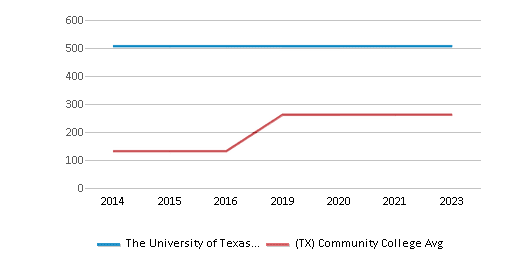
School Calendar
Student Body
The student population of The University of Texas at Brownsville has stayed relatively flat over five years.
The student:teacher ratio of 24:1 has stayed the same over five years.
The The University of Texas at Brownsville diversity score of 0.26 is less than the state average of 0.70. The school's diversity has stayed relatively flat over five years.
Total Enrollment
11,943 students
1,396 students

Student : Teacher Ratio
24:1
23:1
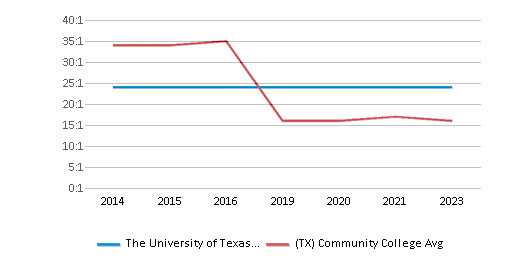
# Full-Time Students
5,838 students
890 students
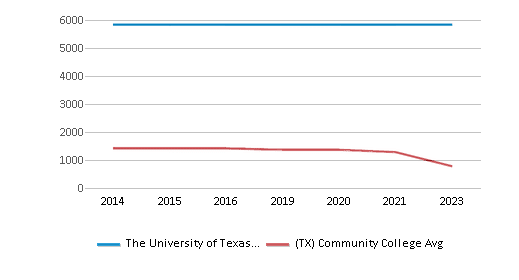
# Part-Time Students
6,105 students
4,022 students
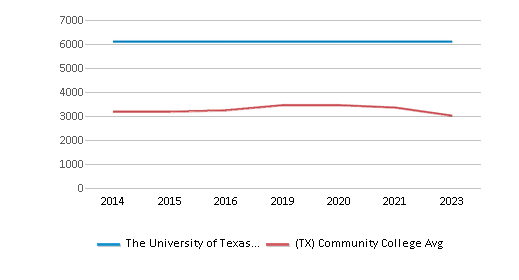
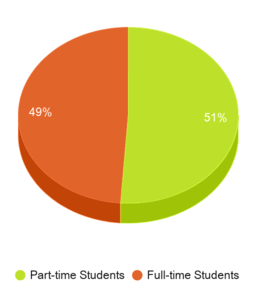
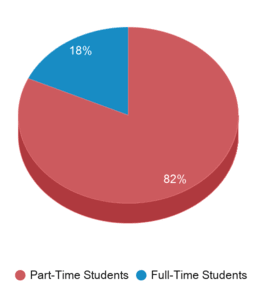
# Enrollment Undergraduate
810 students
403 students
# Full-Time Undergraduate Students
5,633 students
890 students
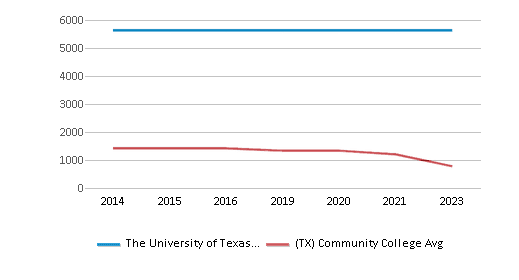
# Full-Time Graduate Students
205 students
40 students
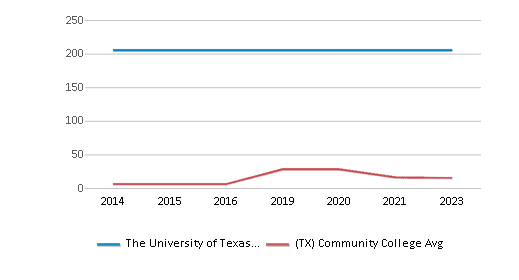
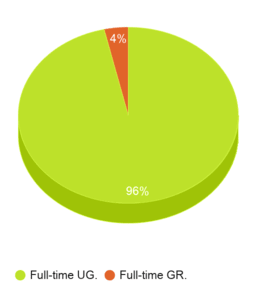
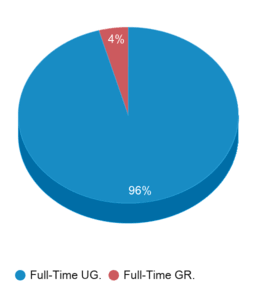
# Part-Time Undergraduate Students
5,305 students
4,022 students
# Part-Time Graduate Students
800 students
47 students
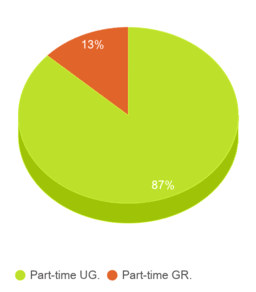
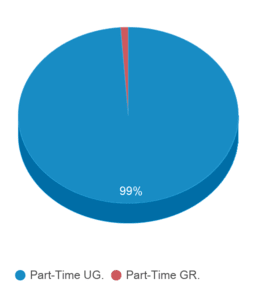
Total Dormitory Capacity
429 students
252 students
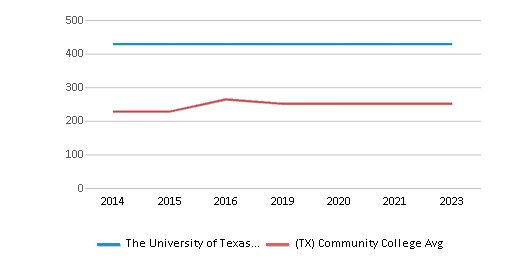
% Asian
1%
6%
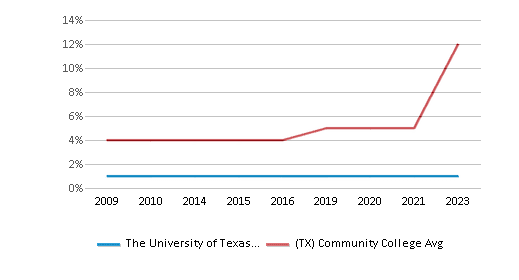
% Hispanic
86%
46%
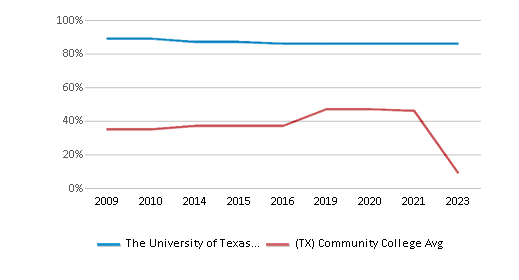
% Black
1%
14%
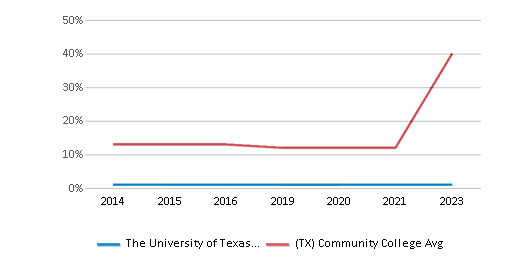
% White
7%
26%
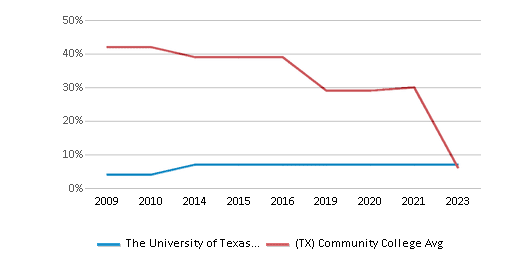
% Two or more races
n/a
3%
% Non Resident races
5%
2%
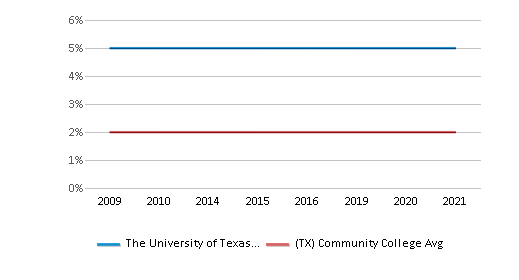
% Unknown races
n/a
3%
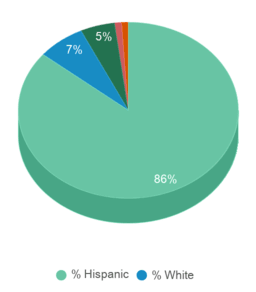
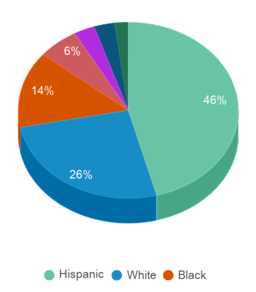
Diversity Score
0.26
0.70
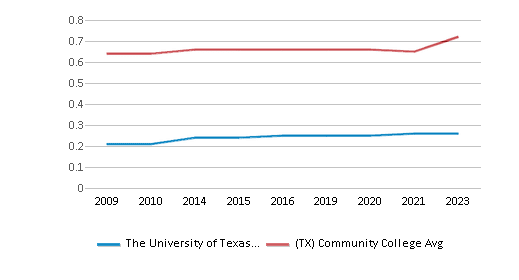
College Completion Rate (Students who graduate in less than 4 years) (Year 2010)
19%
18%
College Completion Rate (Students who graduate in 4 years or more than 4 years)
n/a
0.3357%
Tuition and Acceptance Rate
The public in-state tuition of $5,282 is more than the state average of $3,316. The in-state tuition has stayed relatively flat over four years.
The public out-state tuition of $14,744 is more than the state average of $5,750. The out-state tuition has grown by 9% over four years.
In-State Tuition Fees
$5,282
$3,316
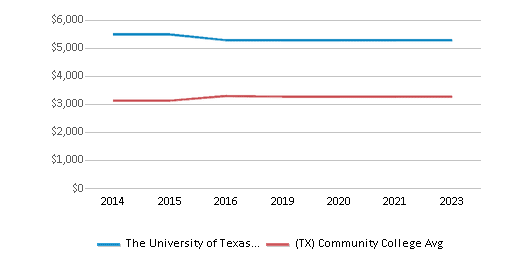
Out-State Tuition Fees
$14,744
$5,750
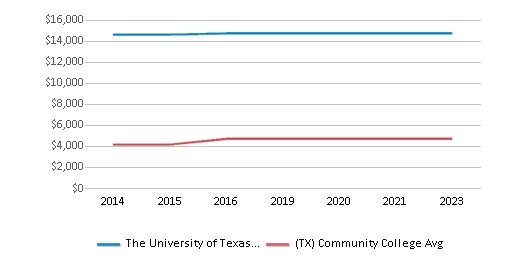
% Students Receiving Some Financial Aid
90%
84%
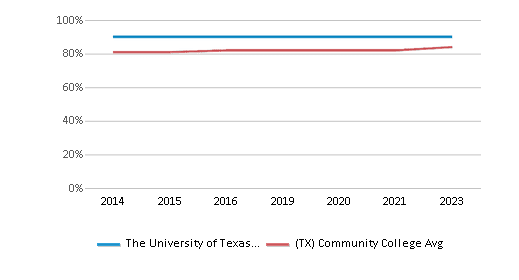
Median Debt for Graduates
n/a
$10,765
Median Debt for Dropouts
n/a
$5,500
Acceptance Rate
n/a
81%
Source: 2023 (or latest year available) Integrated Postsecondary Education Data System (IPEDS)
School Notes
- The University of Texas at Brownsville and Texas Southmost College Partnership offers Certificates, and Associate, Baccalaureate, and Graduate degrees in liberal arts, the sciences, and professional programs designed to meet student demand as well as regional, national, and international needs. UTB/TSC advances economic and social development, enhances the quality of life, fosters respect for the environment, provides for personal enrichment, and expands knowledge through programs of research, service, continuing education and training. It convenes the cultures of its community, fosters an appreciation of the unique heritage of the Lower Rio Grande Valley and encourages the development and application of bilingual abilities in its students. It provides academic leadership to the intellectual, cultural, social and economic life of the bi-national urban region it serves. The University of Texas at Brownsville has been a member of The University of Texas System since 1991. In cooperation with Texas Southmost College, The University serves more than 12,000 students at its campus located in Brownsville, Texas. In Partnership with Texas Southmost College, The University offers a wide range of courses from Associate and Baccalaureate degrees to graduate classes and continuing education.
Frequently Asked Questions
How much does The University of Texas at Brownsville cost?
The University of Texas at Brownsville's tuition is approximately $5,282 for In-State students and $14,744 for Out-State students.
What is The University of Texas at Brownsville's ranking?
The University of Texas at Brownsville ranks among the top 20% of community college in Texas for: Largest student body.
Recent Articles

Obtaining Your Bachelor's Degree at a Community College
Explore the evolving landscape of community colleges offering bachelor's degrees, addressing affordability, accessibility, and workforce needs.

A to Z of Community College Certificates and Courses
From business and healthcare to technology and skilled trades, the article showcases the breadth of options available to students seeking to enhance their knowledge, develop new skills, or pursue career advancement.

What is a Community College?
This comprehensive guide explains what a community college is, its history, and its role in higher education. It covers the types of programs offered, differences from four-year colleges, benefits of attending, and important considerations for prospective students, providing valuable insights for those exploring educational options.









